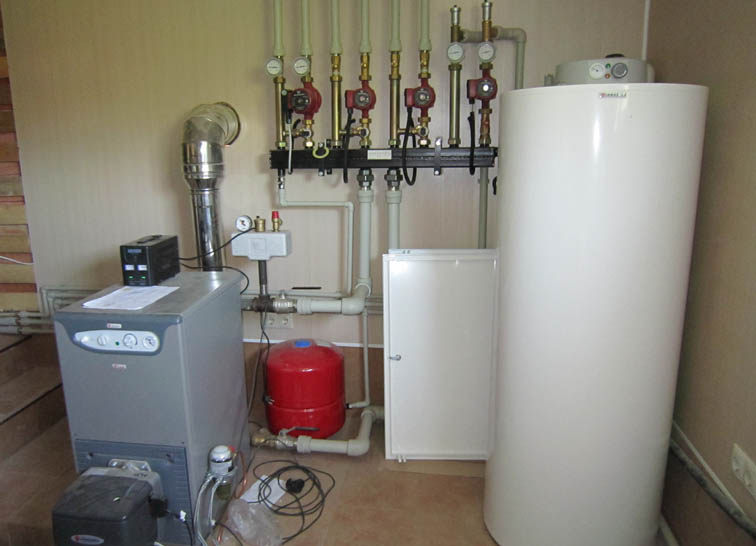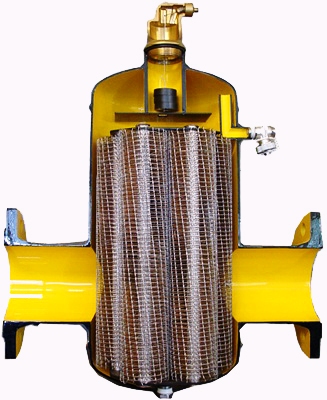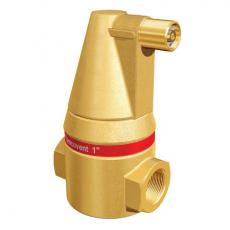Search
Login
For what purposes is a sludge separator and deaerator separators built into the heating system of a house?
Owners of country houses, dreaming of autonomous systems of hot water supply and heating, are not always ready to entrust the creation of such systems to specialists. The motives are clear, someone saves, someone believes that he is able to install heating himself, they say what's wrong, the heater and pipes with batteries. These are the unfortunate craftsmen who subsequently receive additional problems associated with the replacement of pipes, the failure of heating elements, and so on. Well, there would be no money! But the norms were simply ignored, the house heating system was not calculated, and additional factors, such as water treatment, were not taken into account. Again, not everyone even understands the meaning of incomprehensible words separator, sludge, deaerator. We will devote this article to these important elements of the heating system of a private house.
Content
- Autonomous heating system of a private house
- Sludge separator video
- Slurry Separator Installation
- Separator Deaerator video
- Installation of a separator-deaerator
- Prevention of water treatment devices
Autonomous heating system of a private house

In fact, there are no serious tricks in installing an autonomous heating system for a private house, the simplest scheme really involves only a heater (electric or boiler for various types of fuel), pipes and radiators.

By type of heating system can be:
- gas fueled
- fuel oil
- solid fuel
- working with electric heating element
But here are additional devices that allow you to clean the coolant (water), are devices and devices are already much more complicated. But you can’t do without them and integrating them into a common system will be a reliable guarantee of the long service life of all nodes. You might think that plastic pipes are not in danger of corrosion. Yes, corrosion does not threaten, but they can easily become clogged. And the metal elements of the heater? Deposits of insoluble particles will very much damage them. In ordinary water, there are also various gases that corrode not only the metal and create other negative processes that interfere with the normal circulation of the liquid. In a word, the installation of additional purification devices in the heating and hot water supply system is a necessary measure.
Sludge separator
The concept of a separator is an apparatus for separating various substances from each other. In our case, this is the allocation of unnecessary impurities from water. Sludge refers to deposits of impurities existing in the form of a precipitate of water-insoluble particles. Easy to remember a word is like a combination of two types of unnecessary waste, trash and slag. In industrial plants (steam boilers, etc.), sludge is cleaned using a complex thermal method, as well as using chemicals. In a small heating system of a private house, a relatively small device of a sludge separator installed on the pipeline is enough.

The device consists of a container that is designed so that without the use of filters, particles of sludge settle down below and are removed when a special valve is opened. The air that forms during the process exits through an additional outlet at the top of the separator. The advantage of the separator is that the system does not need to be stopped for cleaning, and there is no need for additional bypass pipelines (bypasses). The cleaning process takes place right during operation. And there are no filters! The sludge separator removes the smallest particles of dirt (measurements up to 30 microns). There are magnetic type sludge separators in which particles are separated using a magnet.
Slurry Separator Installation
For the sludge separator, it is important to choose the place for its proper installation. Since removal requires dirt particles entering the system, it is necessary to install a sludge separator on the return pipe, immediately before entering the heater.

This eliminates all water pollution that has formed along the entire route of the system. The separator has the necessary holes for installation, it is only enough to correctly connect them to the pipe using fittings or couplings.
Separator Deaerator

The deaerator is a more complex device and performs the function of removing harmful gases from water that adversely affect the process of moving the coolant and the condition of the materials from which the elements of the heating system are made, both by vortex and by additional heating to form steam, which, when combined with the liquid, displaces gases due to pressure differences. The principle of operation is to remove air microbubbles without stopping the system, without increasing the pressure in the pipelines.
There are several types of household deaerators that differ in operating pressure and the number of steps. The most applicable in private housing single-stage deaerators. The deaerator operates independently of the functioning of the heating system, and unnecessary gases are removed naturally through special openings.
Installation of a separator-deaerator
In contrast to the sludge separator, the deaerator must be installed immediately after the heater, since at this point, due to maximum heating in water, the largest number of micro bubbles forms and the energy consumption for additional heating of the water will be much lower.
The installation is similar to other additional devices built into the system using the existing mounting holes.
Prevention of water treatment devices
Although the separators for removing sludge and deaeration work without shutting down the entire heating system, it is necessary to periodically clean the internal surfaces (even with the correct natural process for removing contaminants, a small amount of dirt and silt deposits remains in the tanks).

For this, the separators are made with access to the internal parts. If a maintenance-free separator is installed, then the entire system is periodically washed with special solutions to clean various contaminants.





